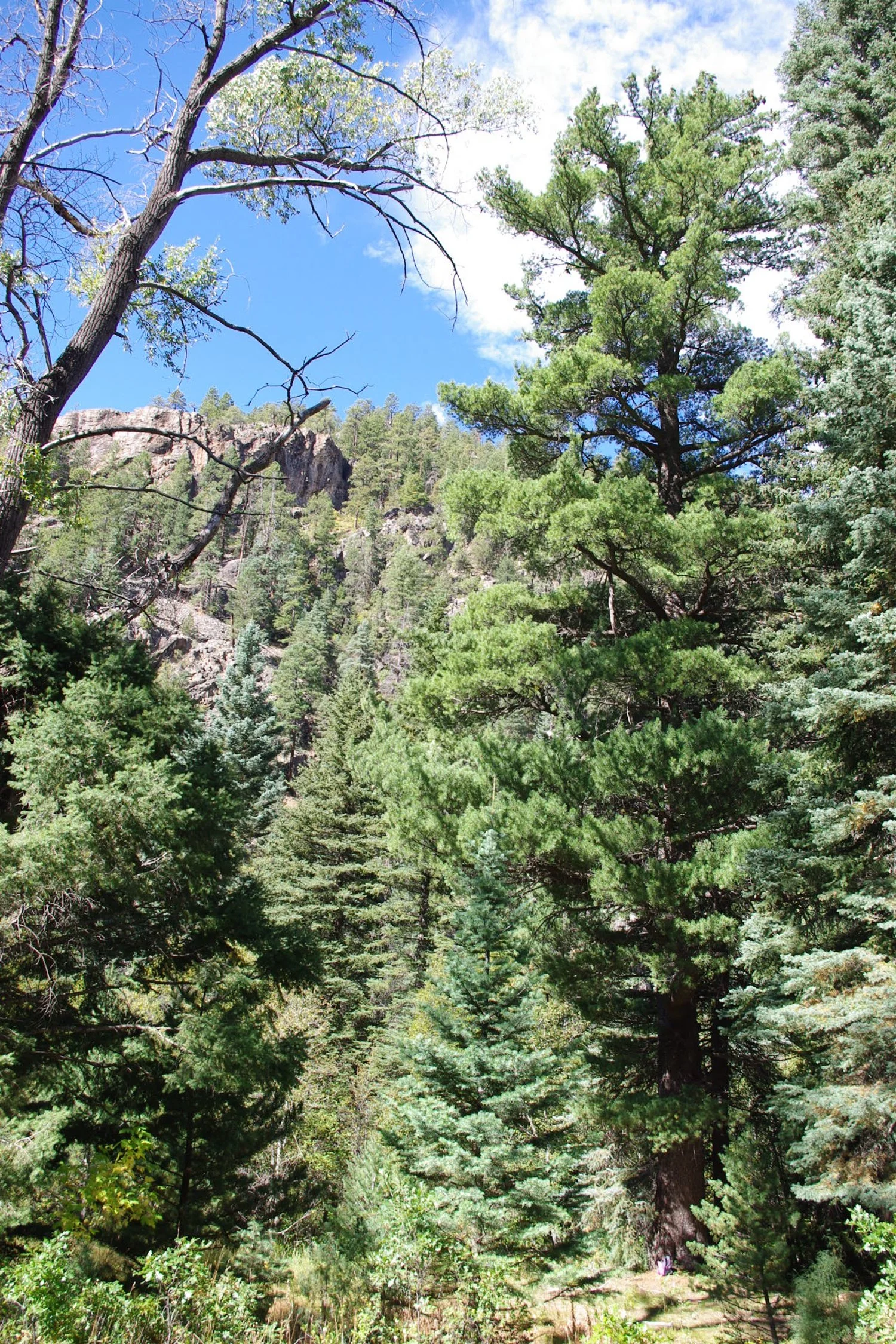southwestern white pine (Pinus strobiformis )
First place champion southwestern white pine in San Juan National Forest near Durango.
Species info:
Leaves: Evergreen needles arranged in fascicles (bundles) of five; soft, flexible, and bluish-green; 2½–4 inches long
Leaflets: N/A (needles are single per fascicle)
Leaf Surface: Smooth and soft to the touch; bluish-green hue distinguishes it from other pines
Bark: Ashy gray and smooth when young; becomes blackish-gray, rough, and furrowed with age
Flowers: Male and female cones occur on the same tree; male cones are small and yellowish; female cones develop into large, woody seed cones
Fruit: Oval cones 3–10 inches long with thick scales that curl at the tips; light brown when mature; dehiscent (fall off when mature); seeds are wingless and eaten by birds and small mammals
Botanical: Pinus strobiformis
Family: Pinaceae
Mature Height: 35–50 feet in urban settings; up to 90 feet in native habitats
Canopy Spread: 20–30 feet
Foliage Type: Evergreen
Tree Shape: Young trees are dense, symmetrical, and pyramidal; mature trees develop an open, irregular crown with long horizontal branches
Fall Color: Evergreen (no seasonal color change)
Water Use: Moderate; prefers loamy, well-drained soils; intolerant of poorly drained or saline soils
Hardiness: Zones 3–7
Wildlife Value: Seeds provide food for small mammals and birds; offers shelter and nesting habitat
Pests/Pathogens: Susceptible to white pine blister rust; young trees are fire sensitive, though mature trees develop moderate fire resistance with thicker bark
Recommendations for planting: Recommended for the Front Range, Native to southwestern Colorado; tolerant of snow, wind, and elevation; best suited for well-drained, open sites
Information sources:
Michael A. Dirr, Encyclopedia of Trees and Shrubs, Timber Press, 2011
Diane S. Pavek, Pinus strobiformus. (1993 as found in www.1upinfo.com)


